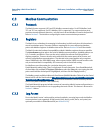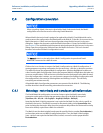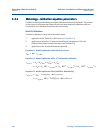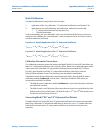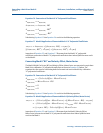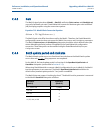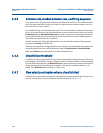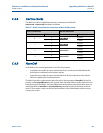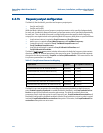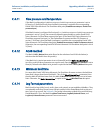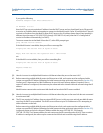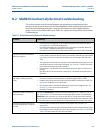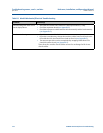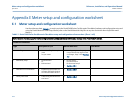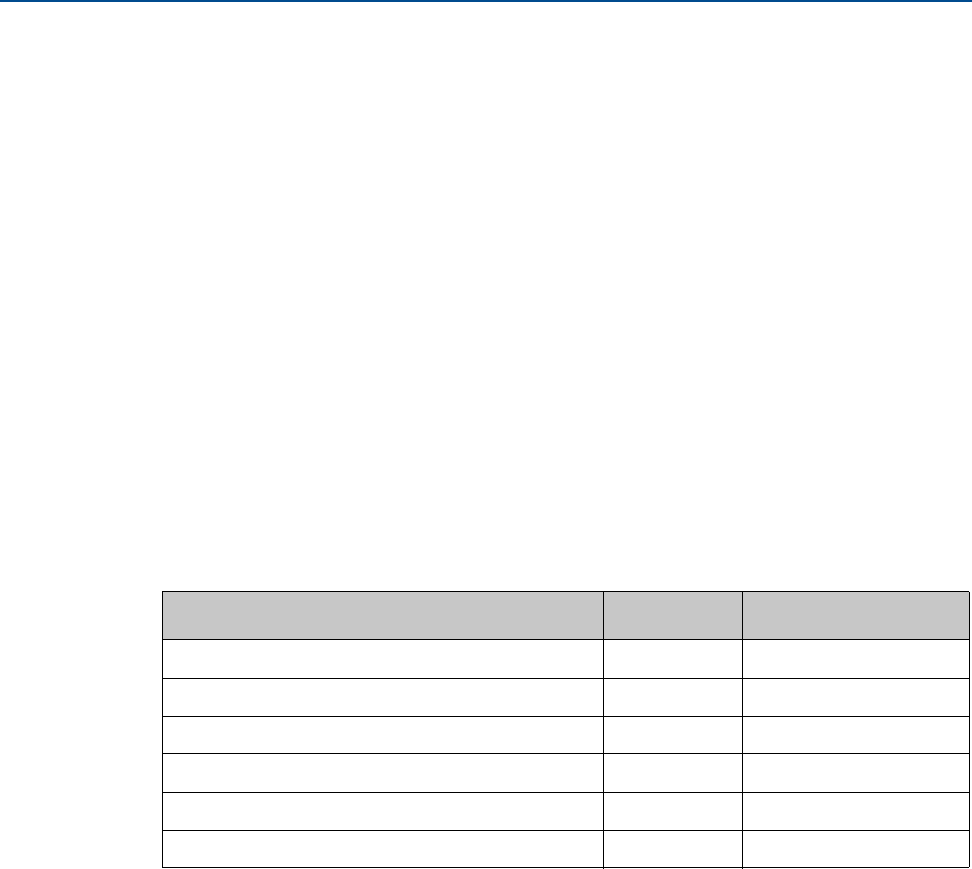
310 Frequency output configuration
Upgrading a Mark II to a Mark III Reference, Installation, and Operations Manual
June 2013 3-9000-743 Rev S
C.4.10 Frequency output configuration
The Mark III, like the Mark II, provides two frequency output pairs:
• Freq1A and Freq1B
• Freq2A and Freq2B
While the Mark II allows for some frequency output parameters to be specified independently
for each pair, the Mark III allows all frequency output parameters to be specified independently
for each pair. Thus, the Mark II frequency configuration points that apply to both frequency
output pairs are copied to both corresponding Mark III frequency data points as specified below:
•
FreqFlowRateCondition is copied to Freq1Content and Freq2Content.
•
MaxFrequency is copied to Freq1MaxFrequency and Freq2MaxFrequency.
•
TestModeOutputPct is copied to Freq1TestModeOutputPercent and
Freq2TestModeOutputPercent.
•
FreqFullScaleVolFlowRate is copied to Freq1FullScaleVolFlowRate and
Freq2FullScaleVolFlowRate.
The Mark II
FreqXContent parameters includes information for both the frequency data content
direction and the “B” channel operation in the event of an error. The Mark III provides separate
data points for these parameters, FreqXDir and IsFreqXBZeroedOnErr. The conversion for the
FreqXContent parameters is as follows:
The Mark II uses two parameters for controlling the frequency feedback on both frequency
pairs: EnableFrequencyFeedback to enable/disable the feedback, and FreqFeedbackCorrec-
tionPct to specify the feedback correction percentage. The Mark III combines these two
parameters into a single data point for each frequency pair, FreqXFeedbackCorrectionPcnt. If
the Mark II had frequency feedback enabled, then the
FreqFeedbackCorrectionPct value is copied
into both FreqXFeedbacMkCorrectionPcnt data points. Otherwise, the FreqXFeedbackCor-
rectionPcnt data points are set to zero.
Table C-2 FreqXContent Conversion Mapping
FreqXContent
FreqXDir IsFreqXBZeroedOnErr
0 (reverse flow rate, zero “B” channel on error) 0 (reverse) 1 (TRUE)
1 (forward flow rate, zero “B” channel on error) 1 (forward) 1 (TRUE)
2 (absolute flow rate, zero “B” channel on error) 2 (absolute) 1 (TRUE)
3 (reverse flow rate, don’t zero “B” channel on error) 0 (reverse) 0 (FALSE)
4 (reverse flow rate, don’t zero “B” channel on error) 1 (forward) 0 (FALSE)
5 (absolute flow rate, don’t zero “B” channel on error) 2 (absolute) 0 (FALSE)



